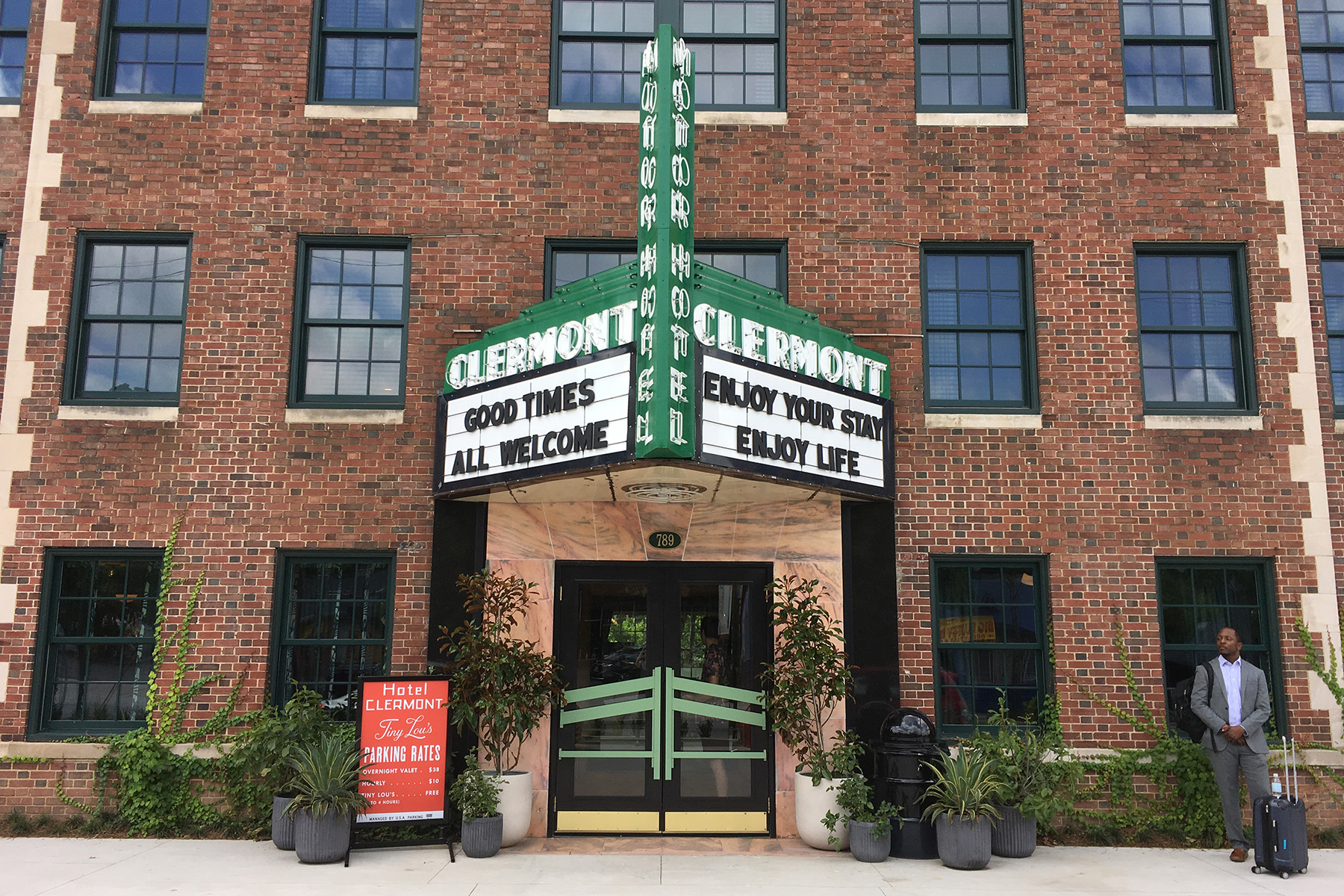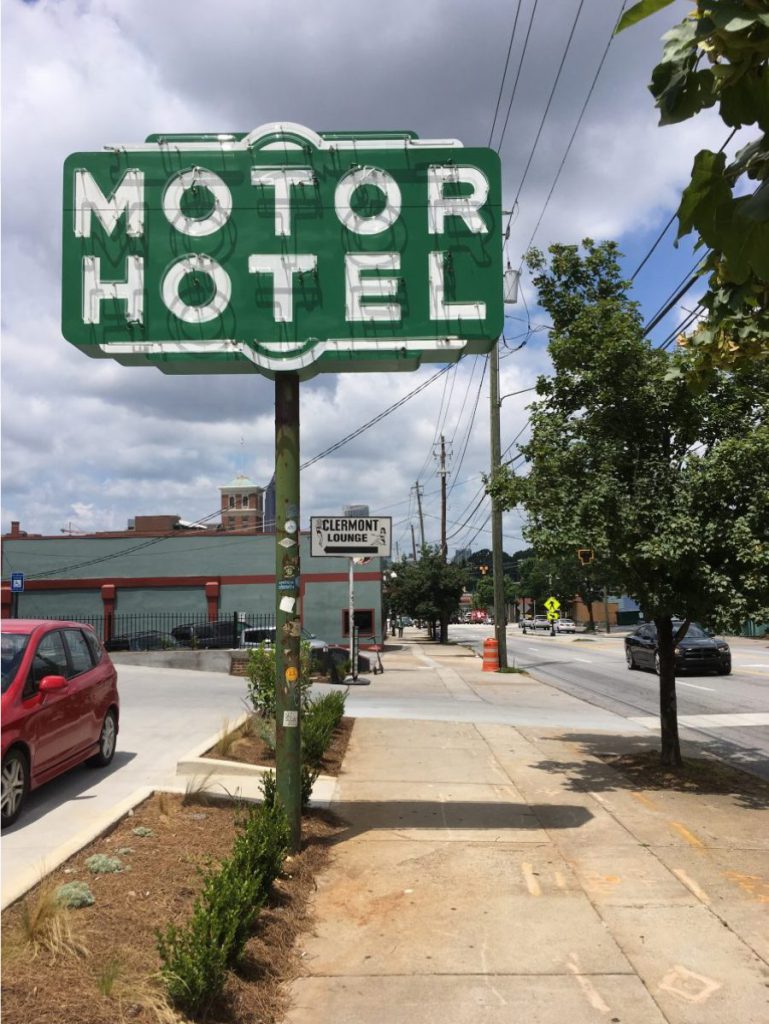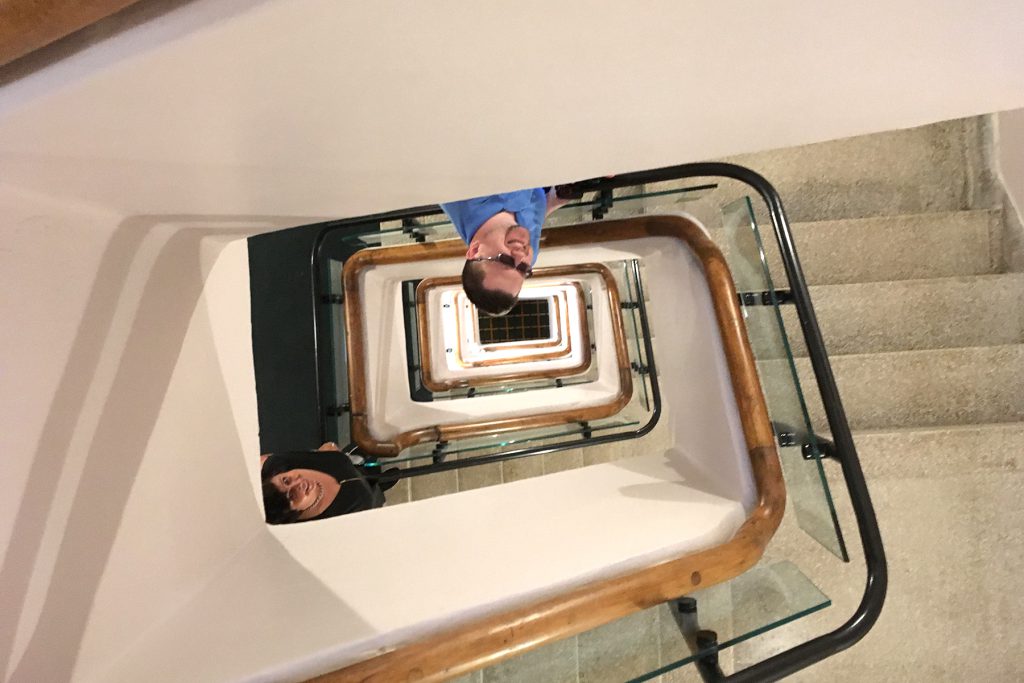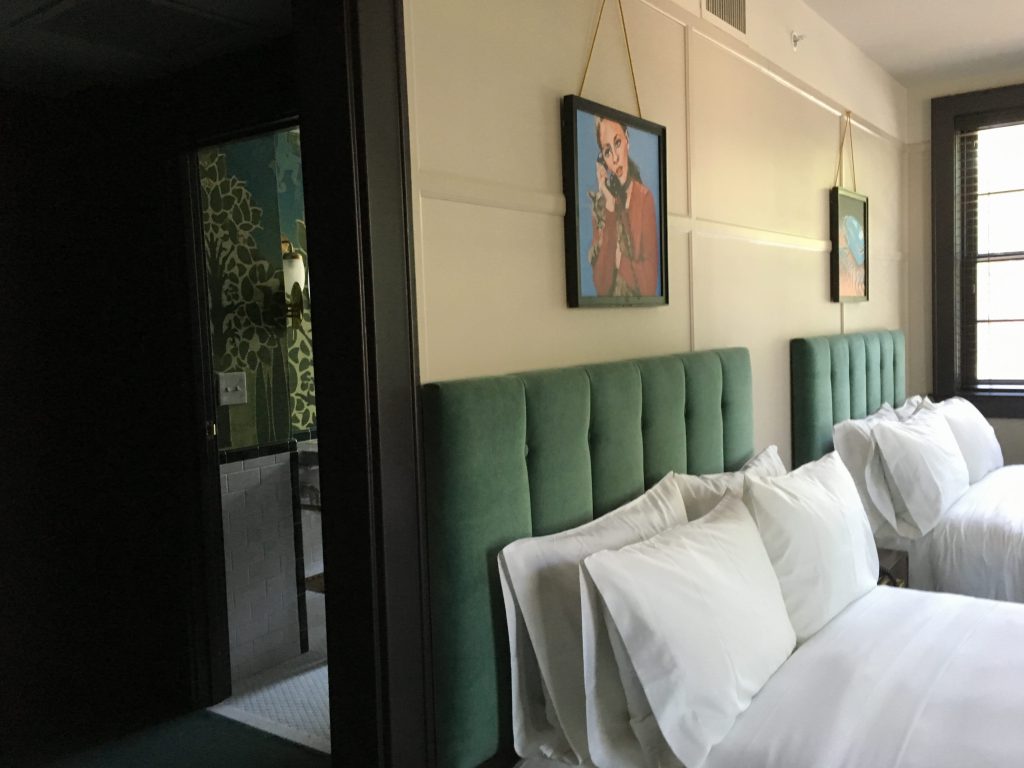Atlanta, Georgia
The Hotel Clermont on Ponce de Leon Avenue had seen decades of decline before it was closed and put on the market in 2010. Clermont Hotel Partners LLC bought the property in January 2013 with plans to redevelop the property as a boutique hotel. The developers used state and federal historic tax credits for the rehabilitation. The “Hotel Clermont” officially reopened in June 2018 with 94 hotel rooms, a public bar and lounge, a restaurant, and a rooftop bar.
Rehabilitation work included an extensive amount of brick restoration, cleaning, window replacement and signage restoration. Interior work included plaster restoration in the original historic corridors and stairwells. Existing hotel room doors and their surrounds were retained. Original marble lobby flooring was cleaned and restored, along with the terrazzo treads and landings in the main stair. Of special note, significant effort was taken to preserve the space of Atlanta’s oldest strip club located in the basement. The Clermont Lounge opened in 1968 and is considered an Atlanta institution.
HISTORY:
The c.1924 Hotel Clermont was originally constructed as the Bonaventure Arms Apartments. It was one of several apartment buildings built to meet a sudden demand after The Great Fire of 1917 destroyed much of Atlanta’s residential building stock south of Ponce de Leon Avenue. Over the next 15 years, Atlanta’s burgeoning commercial growth, increased automobile use and development of neighborhoods to the north and east of the city’s commercial core culminated in the conversion of the Bonaventure Arms to the Hotel Clermont in 1939.
OUR ROLE:
Ray, Ellis & LaBrie Consulting (REL) prepared the National Register nomination and all the required paperwork for the state and federal historic preservation tax credits. REL served as liaison for the client in negotiations with reviewers at both the State Historic Preservation Office and the National Park Service. By working closely with the architects and owners REL ensured that the project adhered to the Secretary of the Interior’s Standards for Rehabilitation. This allowed the client to receive state and federal historic tax credits on their $30 million rehabilitation of the building.





